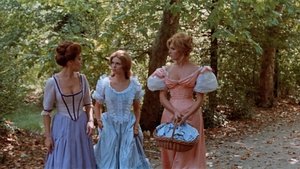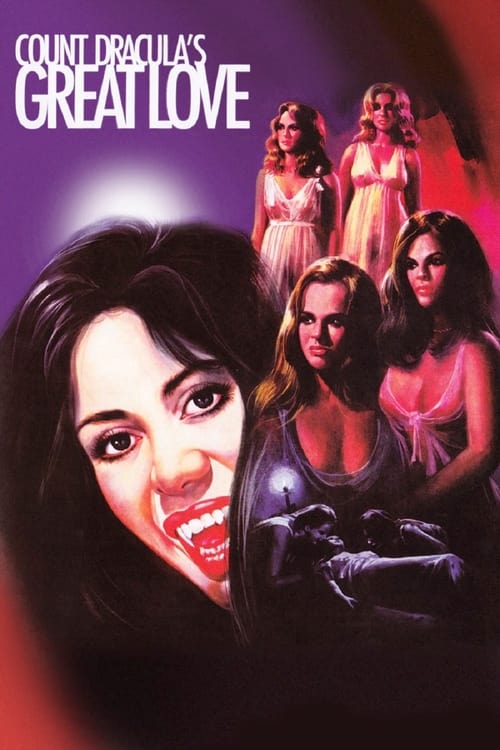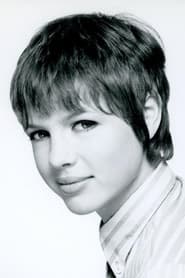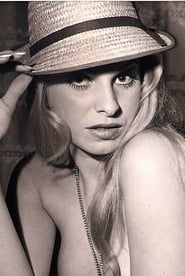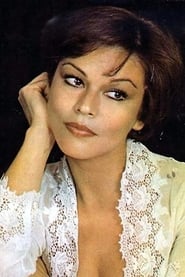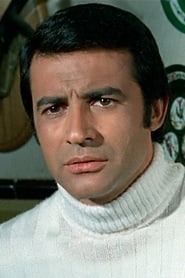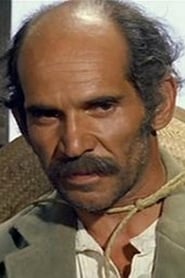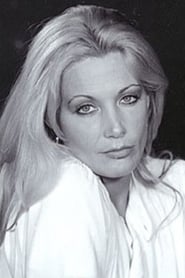Cast
View AllPaul Naschy
as Count Dracula / Dr. Wendell Marlow
Haydée Politoff
as Karen
Rosanna Yanni
as Senta
Ingrid Garbo
as Marlene
Mirta Miller
as Elke
Víctor Barrera
as Imre Polvi
Álvaro de Luna
as Porteador
José Manuel Martín
as Porteador
Susana Latour
as Victim in Karen's dream - Image in Negative
Julia Peña
as Peasant woman
Loreta Tovar
as Victim in Bed (uncredited)
Leandro San José
as
Benito Pavón
as
Crew
Director
- Javier Aguirre
Producer
- Francisco Lara Polop
Reviews
Wuchak
**_Spanish cabin-in-the-woods, except it’s castle-in-the-woods and the monster is Drac_**
In the Tihuța Pass of the Carpathian Mountains north of Transylvania, a stagecoach consisting of five travelers, one male and four females, breaks down and they have no recourse but to seek sanctuary at a nearby sanitorium. They are welcomed by Doctor Marlowe (Paul Naschy), but could he really be...
"Count Dracula’s Great Love" (1973), aka “Cemetery Girls,” is basically a Spanish sequel to Hammer’s Dracula flicks up to “Scars of Dracula.” It’s most reminiscent of “Dracula, Prince of Darkness,” but also contains bits that bring to mind “The Satanic Rites of Dracula,” which was released after this one.
Naschy was of course the king of Spanish horror from the late 60s to the 2000s. This was his only stab at playing Dracula and the first cinematic depiction of the Count in a more romantic light, which would influence Frank Langella’s 1979 version and Coppola’s 1992 movie. Here, Paul sorta looks like Brando when he was younger.
Haydée Politoff stands out on the female front with her glorious locks of auburn hair. She ends up being the main female character but, ironically, Naschy didn’t ‘click’ with her.
Interestingly, this is essentially a cabin-in-the-woods flick, as pointed out in my title blurb. The ‘cabin’ just happens to be a castle or, more specifically, a sanitorium; and the era just happens to be the early 1900s. There’s even a skinny-dipping sequence.
If you’re in the mood for a Hammer-esque Dracula flick with crumbling castles, eldritch woods, stagecoaches, spooky rumors spoken in hushed tones, women in Victorian apparel, bloodsucking vampires, Dracula’s ‘brides,’ diabolical rituals and female breasts, this fills the bill. The ending’s unique and I loved it, but there are some questionable things, like the corny booming voice that curiously comes out of nowhere and the overkill top nudity (which smacks of shallow exploitation).
It runs 1 hour, 25 minutes, and was shot in Madrid.
GRADE: B-
Nov 10, 2024
Thematic Analysis
This Horror film explores themes of fear and survival, delving into the psychological aspects of human nature when confronted with the unknown. Count Dracula's Great Love presents a unique perspective on the horror genre by focusing on the psychological terror rather than relying on typical jump scares.
Director Javier Aguirre brings their distinctive visual style to this film, continuing their exploration of themes seen in their previous works while adding new elements. Their approach to pacing and visual storytelling creates a viewing experience that rewards close attention.
Released in 1973, the film exists within a cultural context that now offers viewers historical perspective on the social issues of that era. Its reception demonstrates the diverse reactions to its artistic choices and its place in cinema history.
Did You Know?
- The production of Count Dracula's Great Love took approximately 31 months from pre-production to final cut.
- The final cut of the film runs for 85 minutes, though the director's initial assembly was reportedly 134 minutes long.
- Some visual effects sequences took up to 4 months to complete.
- The director insisted on using practical effects whenever possible, reserving CGI for only the most necessary scenes.
- The musical score contains over 63 unique compositions.
Historical Context
- In 1973, when this film was released:
- The Watergate scandal changed public perception of political institutions.
- Economic recession and oil crises were affecting global economies.
- The film industry was dominated by major studios, with independent cinema still in its early development.
How This Film Stands Out
While Count Dracula's Great Love shares thematic elements with other films in its genre, it distinguishes itself through its unique approach to storytelling, visual style, and character development.
Unlike The Wolfman, which focuses more on action than character development, Count Dracula's Great Love subverts genre expectations by exploring its themes with greater nuance.
While films like Martyrs and Dead Ringers explore similar territory, Count Dracula's Great Love stands apart through its deeper exploration of its central themes and more complex characterization.
This film's unique contribution to cinema lies in its bold artistic choices and willingness to challenge viewer expectations, making it a valuable addition to its genre.
Details
- Release Date: May 12, 1973
- Runtime: 1h 25m
Where to Watch

